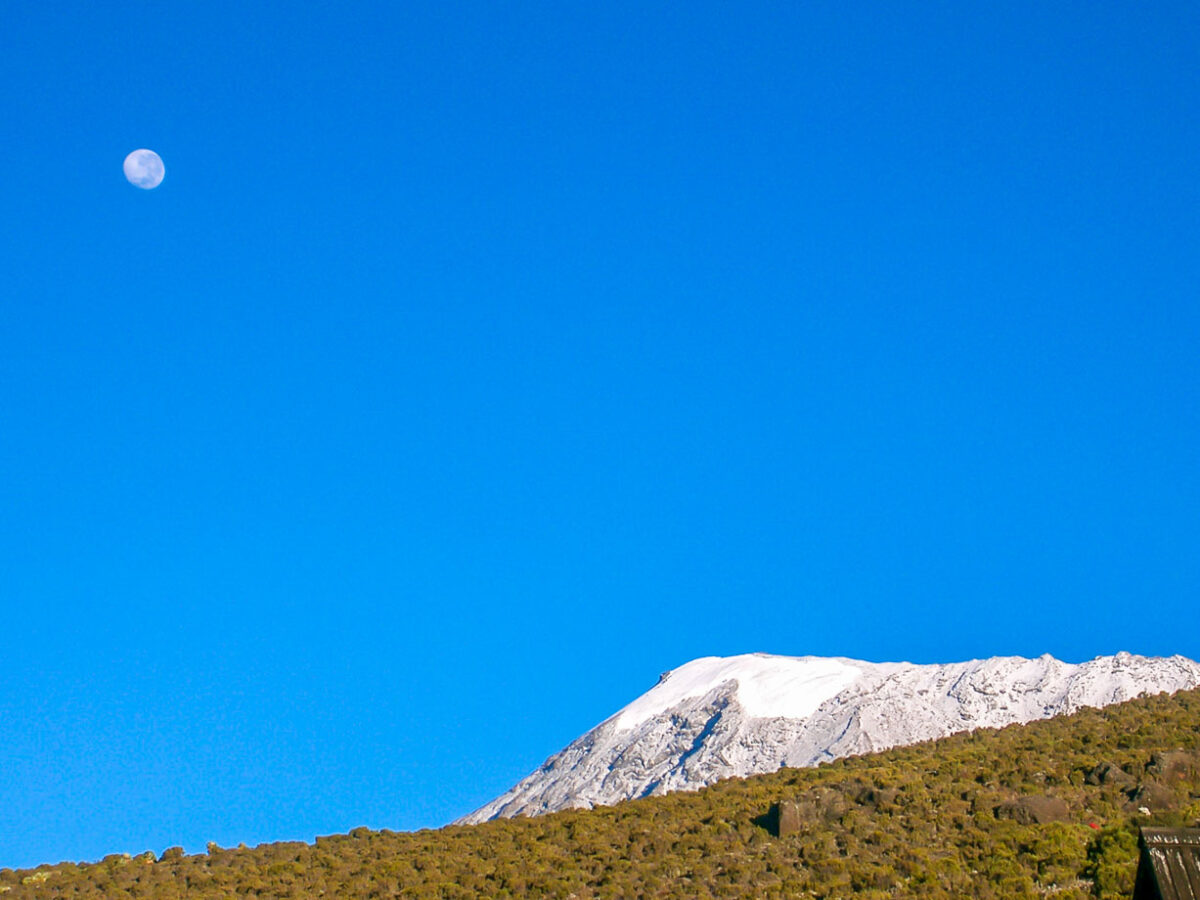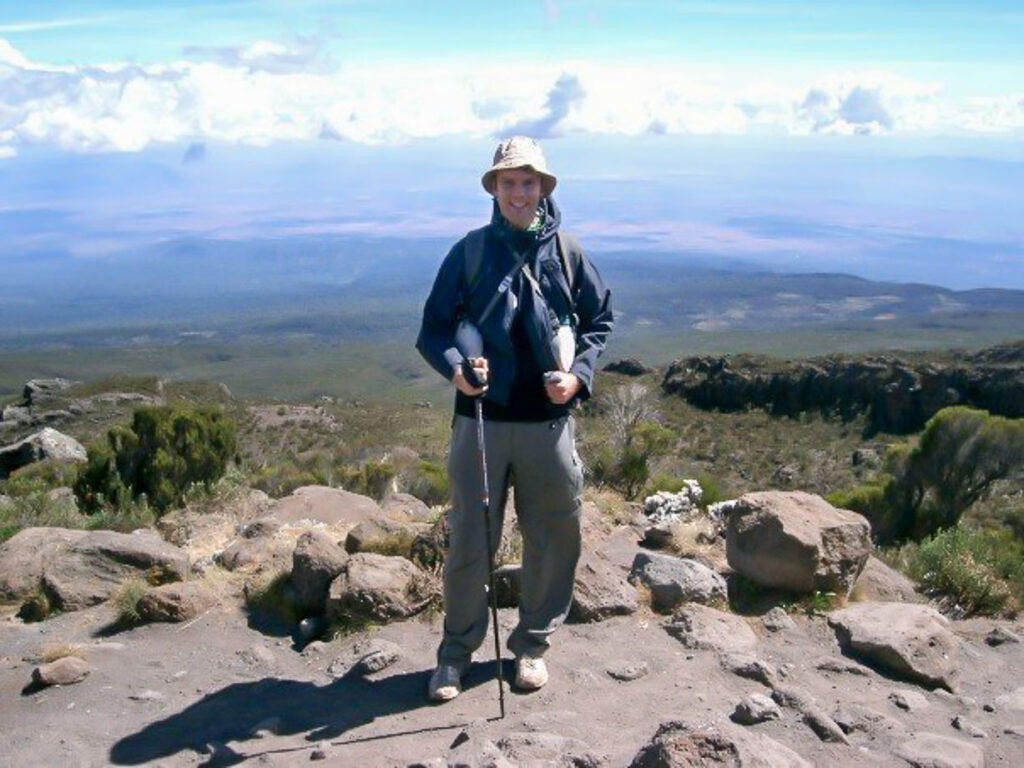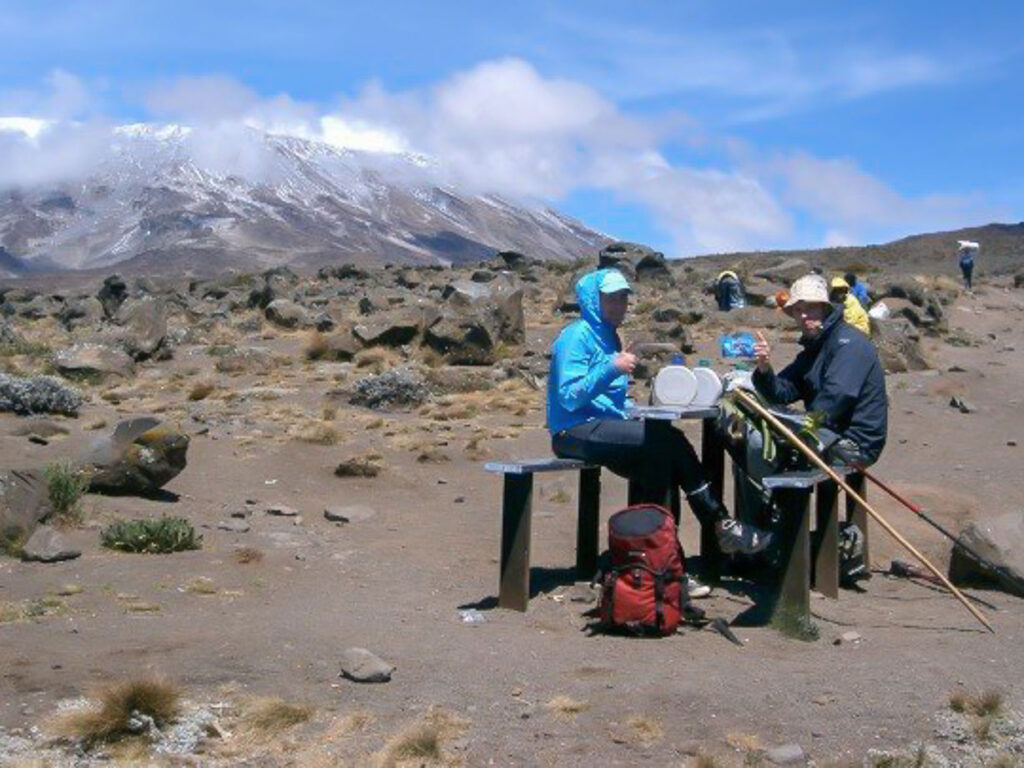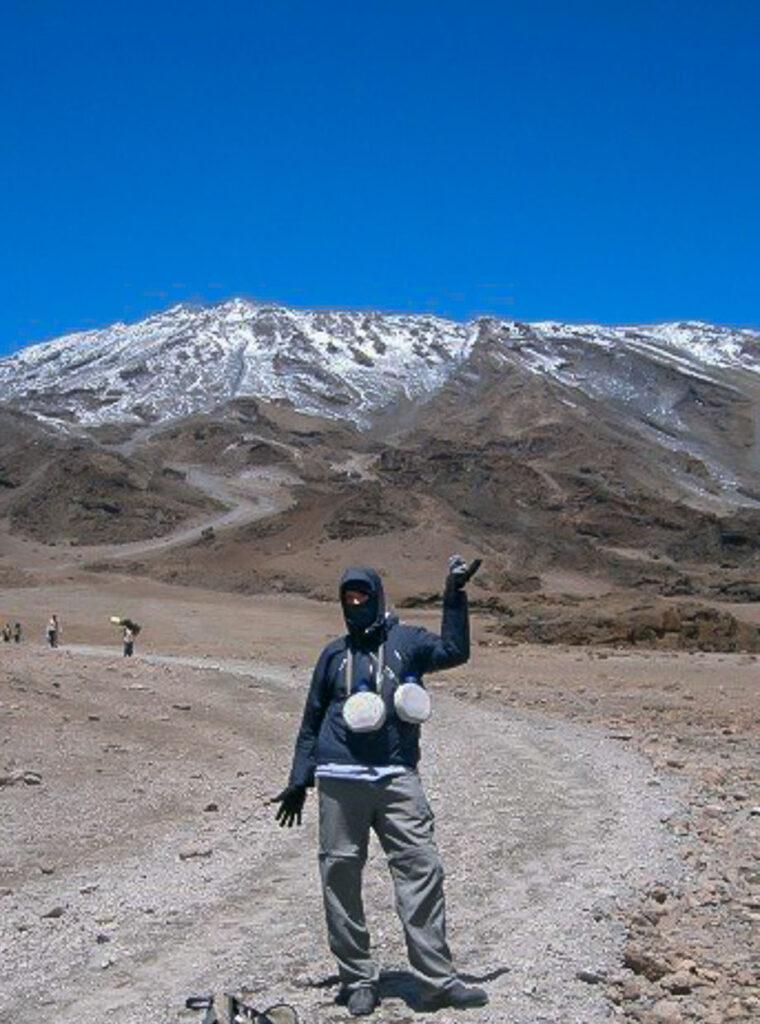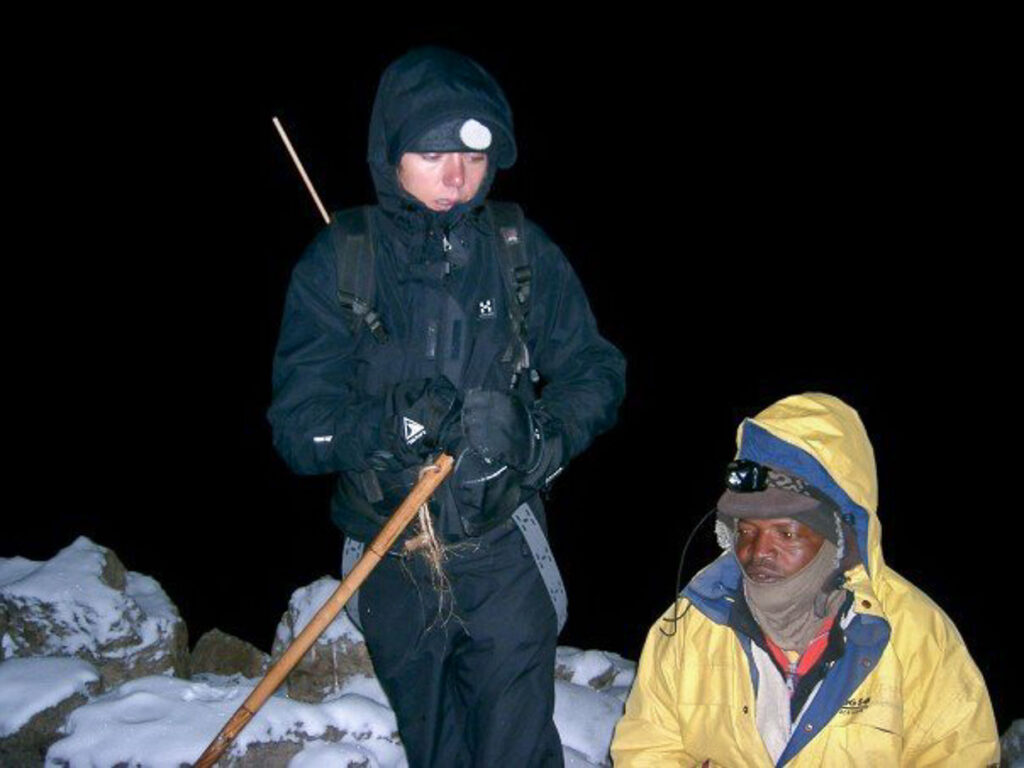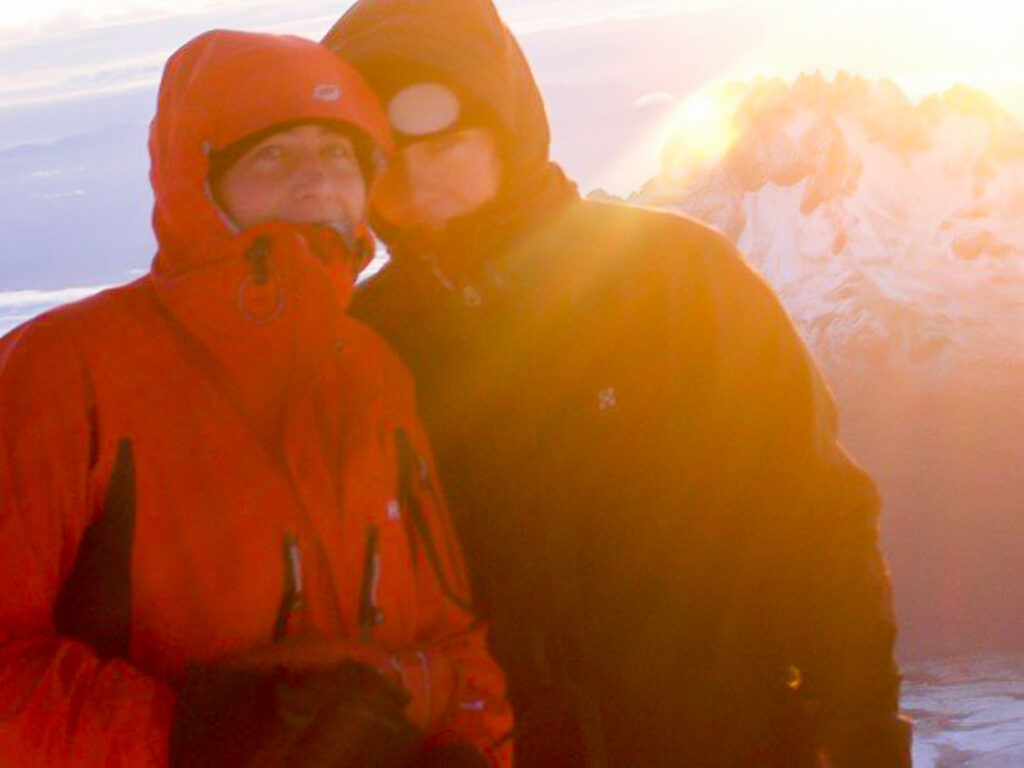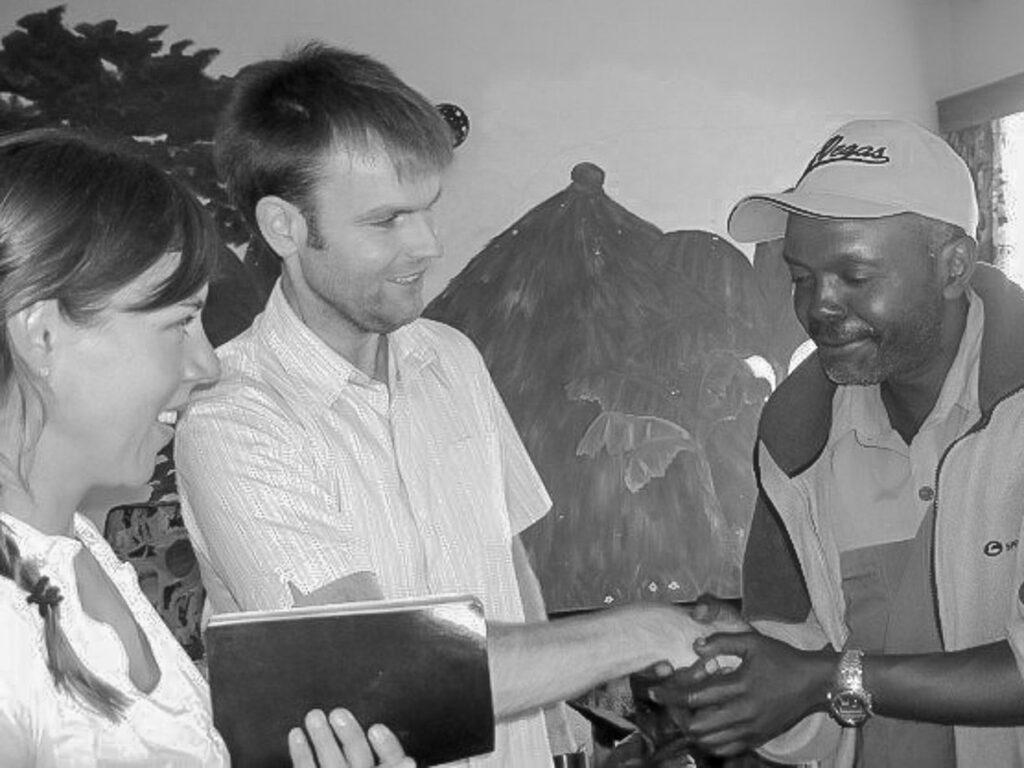In 2007, I spent one month in Tanzania. I climbed Kilimanjaro, did a safari in the Serengeti and went scuba diving on Zanzibar. It was one of my best adventures. This is the story of how I conquered Kilimanjaro with 2 Swedos.
Where is Mt Kilimanjaro?
Mt Kilimanjaro is the highest mountain in Africa and one of the continent’s most iconic sites. It is also the highest of the world’s major mountains which can be “climbed” (read: walked) with no special mountain equipment or moutaineering experience. Actually, it’s pretty easy. Apart from the altitude, that is.
The mountain has 2 main peaks, Kibo, the larger with a glacier (rapidly melting) and Mawenzi, a smaller jagged peak. The mountain is surrounded by a lush forest and the whole area is a fertile and produces tons of fruit and veggies.
There are a number of different routes you can take ranging from 5 to 7 days. Some are harder than others with lots of ups and downs.
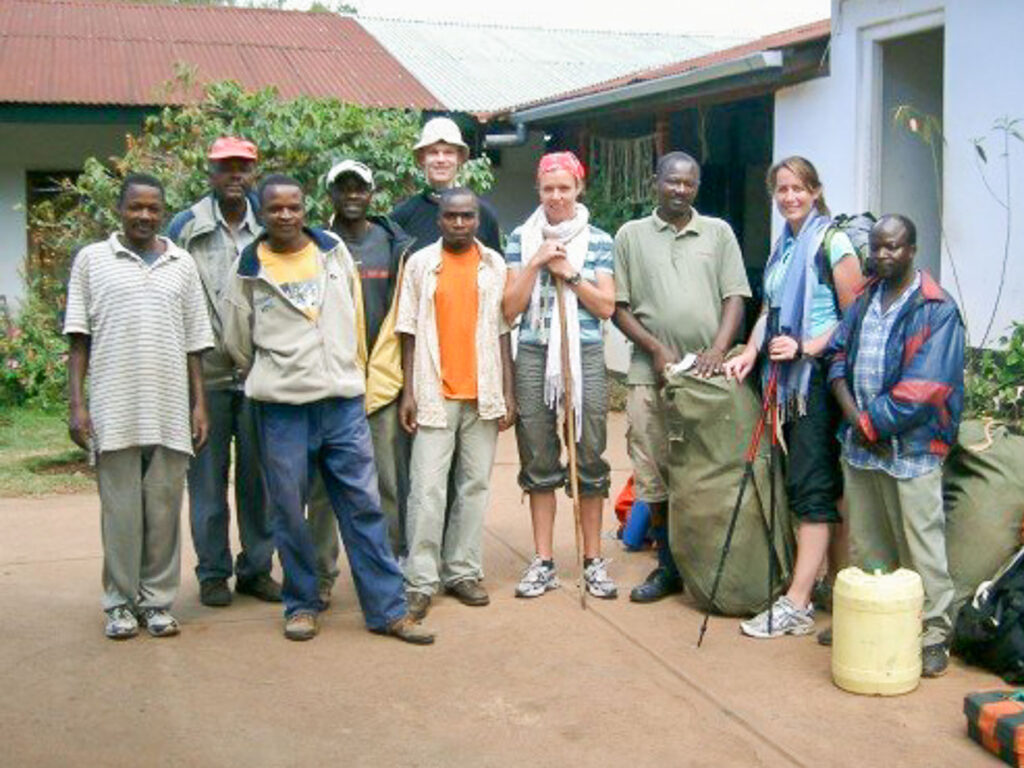
How to climb Kilimanjaro
You need to book a tour. It costs a ton to enter the park and you can’t just rock on up diy style and do your own thing. Each climber must be accompanied by a guide. You need a whole team of porters to carry your stuff for you.
It is better to book directly with the tour operator on the ground. All the tours are exactly the same as foreign agents outsource to local tour companies. Therefore, it is better to cut out the middle man and pay only a fraction of the cost. I booked directly with a hotel which also offered tours. I paid around $US 1000 about half of which was in park fees, but it is possible to pay up to 5 times that! The only difference is you might get an oxygen tank or a bottle of wine with your evening meal. Otherwise, everything is exactly the same – the same mountain, the same guides, the same campsites, the same food.
I researched carefully to find an ethical tour operator which was a member of the Kilimanjaro Porters Assistance Project. Every year porters die due to not having appropriate clothing for the conditions. Despite poor working conditions, these poor dudes work like slaves carrying your heavy stuff all the way up the mountain. They are poorly paid and equipped, but the money they make is a small fortune compared with what they would earn working a normal job.
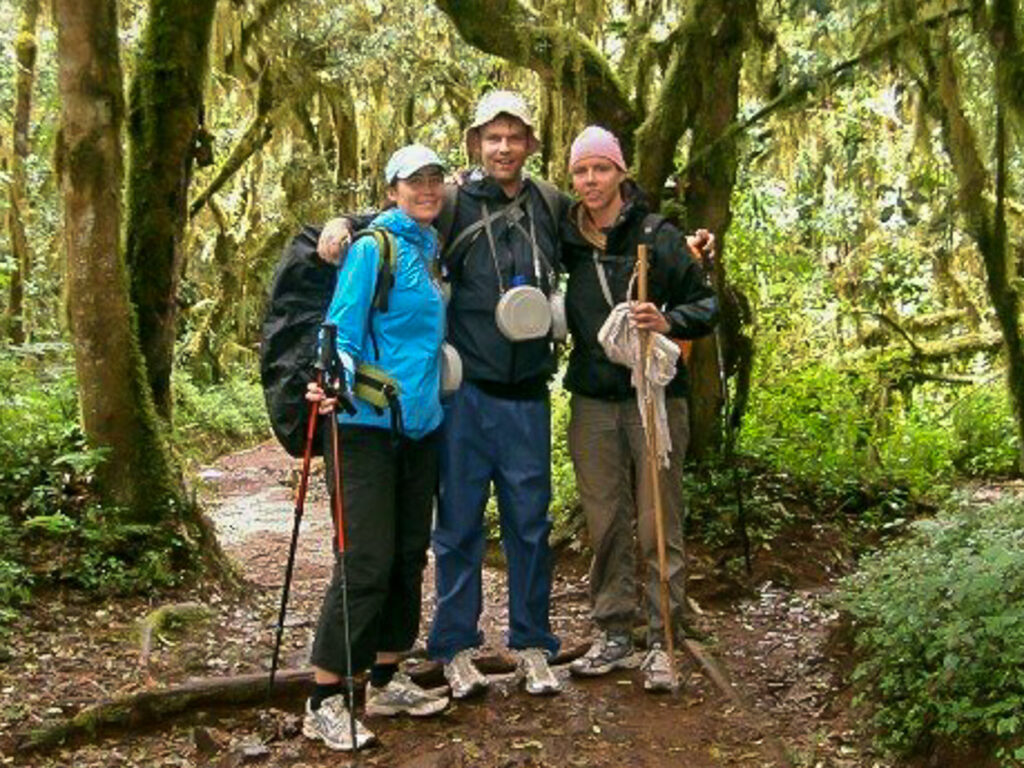
Which route to choose?
There are several routes each with varying degrees of difficulty. Each route has its pros and cons. The longer the route, the more time you have to aclimatize to the altitiude. On some of the shorter routes, there is also a possibility to do extra days where you ascend to a higher spot to get used to that altitude, then go back down and spend an extra day at the same camp.
I was planning to do a so-called “solo climb” on a more obscure route, just to be different. This means you are alone with your guide and the porters. However, there had been a fire on that route, which had burned all the vegetation, thus making it less appealing. Also, groups I met at my hotel who had just descended advised me to try to join a group for the cameraderie. They also told me the guides don’t speak great English and you need other climbers to encourage you.
I spoke to the manager of my hotel and asked if there was another group planning to leave in the coming days. He said there was only one group of 2 Swedish girls. “You could do a lot worse that 2 Swedish girls!” he added with a wink. So, I approached the 2 women and they kindly agreed to let me join their trek.
They had already decided to do the easiest route, the Marango route. It is the shortest (5 days) and is known as the “coca-cola” route, because they sell coca-cola at the camps and it used to be notorious for having coke cans and rubbish all over the place. We were pleasantly surprised, as the route had actually been cleaned up with nice pathways.
What gear do you need?
It gets freaking cold up there. You need to be well prepared with at least 6 layers. On the final ascent, I had 2 thick gloves and 2 layers of thick woolen socks and still could not feel my feet! You can rent clothing and equipment there, but it is all pretty old and shitty stuff. Better to bring your own, even if it means carting it round for the rest of your holiday.
You carry all your own personal gear on your back. Your porters carry the food and cooking equipment. It is not like Nepal where the poor porters carry these huge backpacks for the rich tourists, so they can have fresh clothes every day to wear. Another good reason to choose the Marango route is because the porters don’t have to carry your tents in addition to all the camping equipment.
Also, the weather can change very unpredictably. One moment, the sun is shining and you’re wearing t-shirts. The next thing, you walk round the corner and a storm hits. You have to be prepared for every eventuality. That said, I bought a really expensive pair of hiking boots, which were total overkill. You need closed shoes for the final ascent, due to the cold. But you don’t need mountaineering boots. I never wore these boots ever again and were a complete waste of money.
One great thing about the Marango route is that there are huts. At night, it snowed and we were warm and cosy inside playing card games. All the routes converge at the last camp prior to the final ascent. There, we met other groups coming from different routes. They were camping and at night could do nothing but lie in their sleeping bags as the rain and snow soaked their tents through.
Starting the climb
We had a team of about 10: me, the 2 Swedos (as I affectionality named them), 3 guides and a bunch of porters. The first few days were really easy. You walk super slowly to get used to the altitude. The first day, you walk through jungle and vegetation. This gradually becomes sparser and you end up up on rocking plateaus.
The 2 Swedos and I really hit it off and were laughing and joking all the way along the route. I told them I had never been to Sweden, but had heard stories of scantily-clad semi-naked young women dancing around a pole in summer. Note, this does actually happen – women dance around the maypole, but in costumes which are not see-through. Absolutely not true they replied.
When we made camp in the evening, there was a communal hut where we would eat with other climbers and share stories and experiences of the day’s adventures. One night, I had a small shoulder pain and asked if the Swedos would give me a massage, to which they replied in your dreams! The next day, as we were walking, they told me when Swedos give a massage, they do it naked!! I had to pick up my jaw from the floor!
The final ascent
You reach the final base camp in the afternoon and have some time to “sleep” before getting up again at 11:00pm to start the final ascent on the glacier. You do it at night for 2 reasons: To see the sunrise and because the earth on the crater is too soft to ascend during the day. At night it freezes over and provides some grip. Due to the altitude and steepness of the crater, you have to walk very slowly in a zig-zag. Needless to say, it was freaking cold and extremely hard not having slept at all.
We started on our way up and the altitude started to hit me – headaches, nausea, difficulty breathing. This got worse and worse to the point where I was gasping for air to get some oxygen into my lungs. It was exhausting, but we were only allowed one rest at the halfway point. This is because if you stop moving, you freeze to death! I lost all feeling in my fingers and toes.
Because it was dark, you could not see the top. You could see what looked like the top, only to be heartbroken to find yet another peak after it and another. I kept asking our guide, how much further? He would reply, about 45 minutes. After 40 minutes with no end in sight, I would ask him again and he would reply, about 35 minutes!
I was starting to get into real trouble. I saw other climbers vomiting and being helped up by their guides. This is really bad because in a normal year many climbers die of altitude sickness. If you start to suffer severe symptoms, you need to descend immediately. However many climbers do not want to do this because it is their dream and they paid so much money, so insist their guides carry them up. Note, that altitude sickness affects people randomly regardless of age or fitness level.
I was not that bad, but was suffering intolerably and started to cry for my Mommy! Seeing this, my guide looked at me scorningly and uttered – Steven, you are not dying!! I said, you’re right, I am not dying. Right then, the 2 Swedos said to me, Steven, if you make it to the top, we will give you our massage! I said, ok I will do it! I will do it for the massage! The naked massage! With this burst of motivation, I pulled myself up, stopped feeling sorry for myself and soldiered on!
Reaching the top
Finally we made it to the top of the crater and took a well deserved break. It had taken 6 hours to reach this point. Note that this is enough to earn a certificate of completion, but it is not the official peak. That is around the other side of the crater, another 200 meters higher. To get there, you have to deal with extreme winds in addition to the extra distance.
After a while, it was time to move on. Our guide asked us if we wanted to continue to the peak. The 2 Swedos, who had not been too badly affected by the altitude wanted to continue. I said, well I was having a pretty hard time of it there for a while, but now I feel my second wind and… I was abruptly interupted by the guide who said: Steven, you are going down, because if you die, it is very bad for me!! So, in the end, he pushed me just enough to get to the top without risking my life.
It was the right decision as I was utterly destroyed and could not have carried on even if I had wanted to. It was still dark, so I gave my cheap digital camera to the 2 Swedos, so they could get a photo of themselves at the peak. I did the gentlemanly thing, because their camera had been stolen at gunpoint on a bus in Nairobi (known as “Nairobery”) prior to arriving in Tanzania. It had still been dark at that point and had I known what was about to happen I might have changed my mind.
The most amazing sunrise of my life!
It was still dark when we made it to the top, but slowly the sun started to rise from behind Mawanzi, the jagged second peak of Kilimanjaro. It has just snowed the previous night and the fresh snow started to glisten as the peak formed a silhouette behind the rising sun. Finally the sun burst over the cloud line spread right across the horizon! One of the most magnificent sights of my life. And the irony was, the Swedos didn’t get their picture with the sign at the peak because the camera froze! They managed to get a couple of shots of the sunrise on the way back, but all that remains for me are my memories.
No massage for me
Going down was so much fun. By this time, the ice had melted and the earth was so soft, you could leap in the air and slide down the mountain as you would on a sand dune. I was pretty shattered by the time I got back down to the camp and rested for a while. I was really looking forward to my massage, but my dreams were shattered when the Swedos reached the camp and immediatley reneged on their promise! So much for the naked massage!
Closing Ceremony
We made it back to base camp the same day and later in the afternoon had the ceremony where we paid the porters their tips and received our certificates of achievement. The porters survive on tips, so be generous.
Conquering the mountain was one of the greatest achievements of my life. Overall, it was not difficult to do. Most the route was very easy until the final ascent, when I really suffered, but managed to push through. Doing something really hard with other people bonds you together in a way that nothing else can. Pushing yourself to your physical limits gives you a great sense of achievement. I am glad I did it while I was still relatively young and had no fear of altitude sickness. Now, I just freak out at the thought of going over 4000 meters!
And that sunset! Shame I didn’t get any photos of it, but it remains in my memory as one of the most awesome sights of my life.
Apologies for the quality of these photos, which were taken on a cheap camera. I deleted them, then had to download copies from Facebook!
